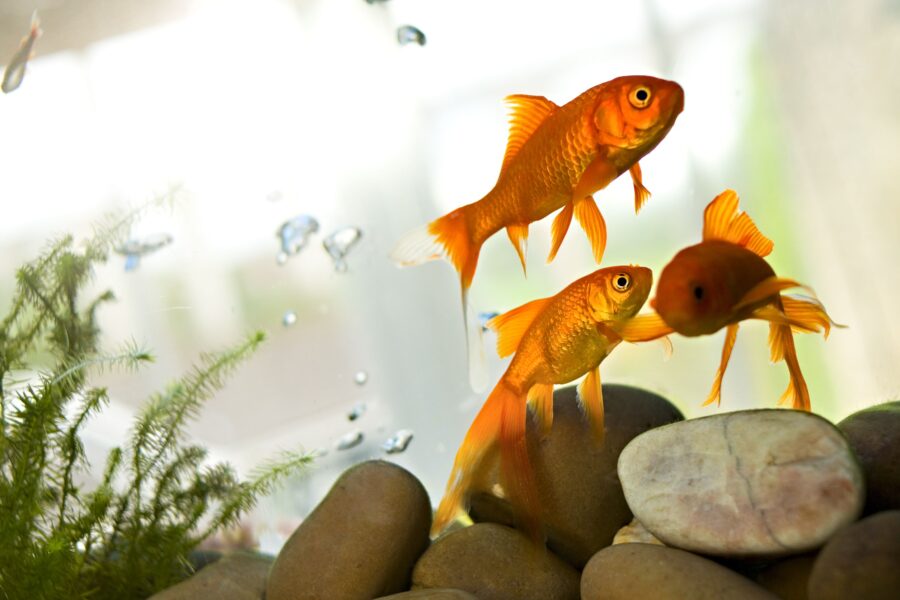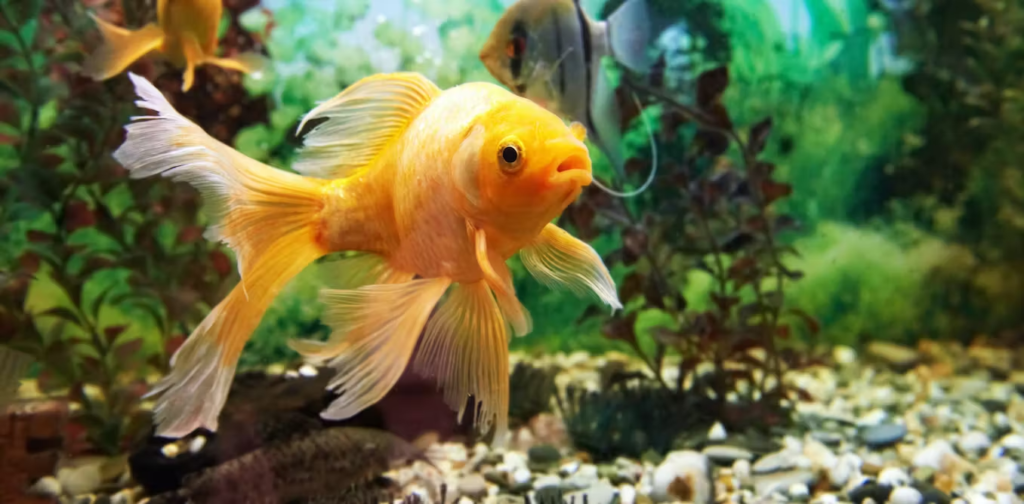
Let’s go on a fantastic journey, shall we? Perfect! Consider yourself as an explorer, and who is your companion? Your delightful pocket of sunshine, your goldfish. Now what’s more fascinating than their striking, lustrous color, and playful swimming? Not much, right? But what do you do when your tiny swimmer starts losing its color and fades into white? Heartbreaking, isn’t it? Do not fret! It’s time to dive into the enchanting and somewhat hilarious world of goldfish and their changing shades.
A Glimpse into What Makes Goldfish Special
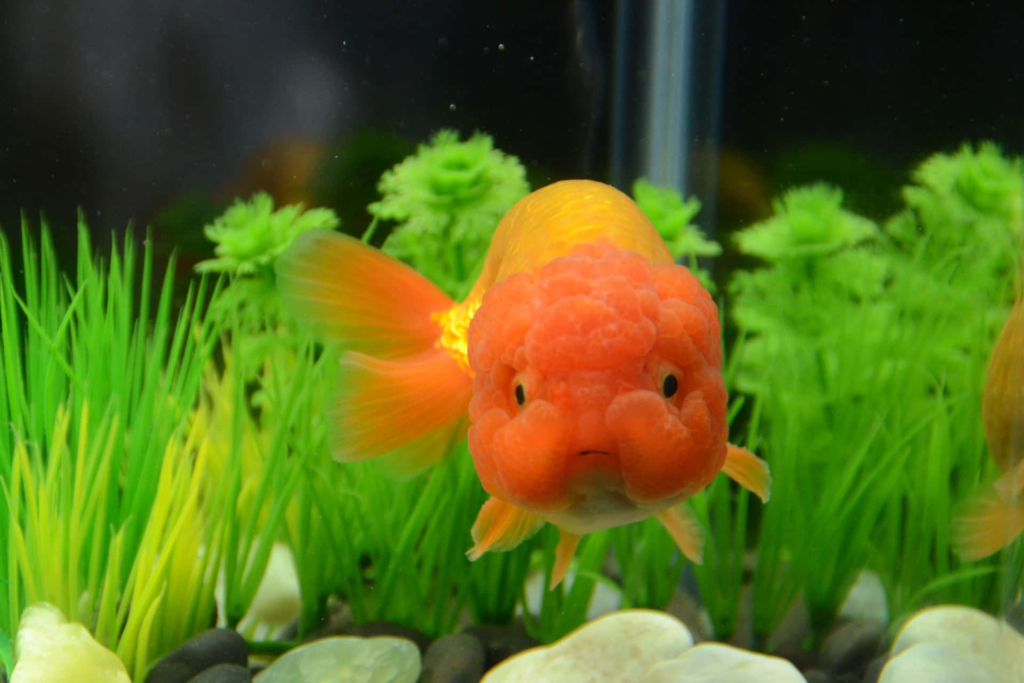
If someone ever tells you “You have the memory span of a goldfish,” don’t feel offended! Little do they know, goldfish can remember things for up to a year. Sometimes, they even put us humans to shame with their superb memory, don’t they? Goldfish are not just living jewels you keep in bowls; they are smart, resilient, and full of personality. Yet, what makes goldfish truly unique is their array of enchanting colors. From vibrant yellows, oranges, and reds, to deep blacks and silvers, they surely are a sight to behold in your mini aquatic wonderland.
A Sneak Peek into The Mystery of Your Goldfish Turning White
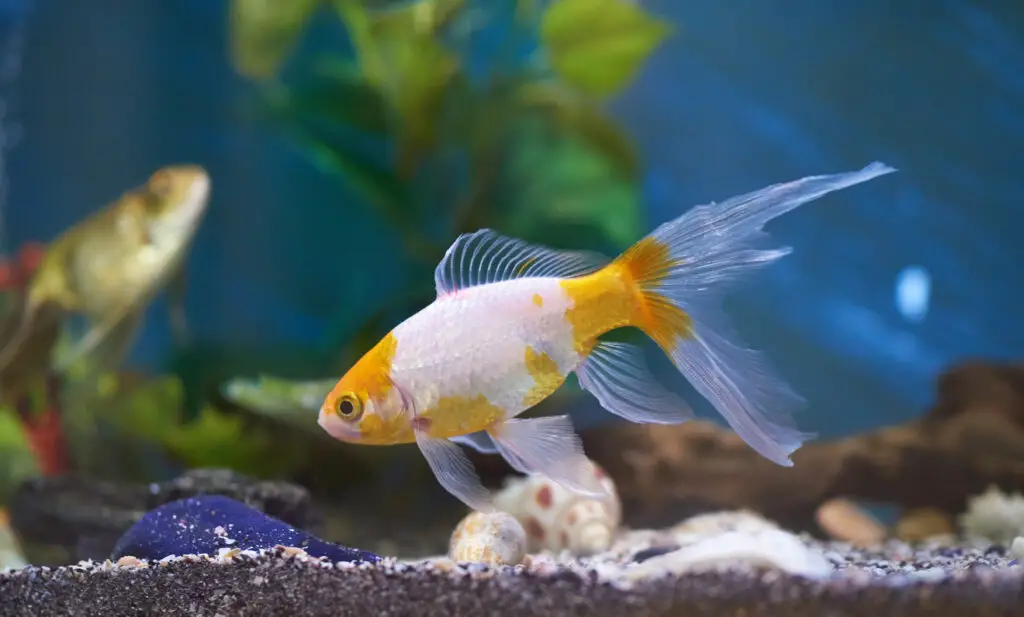
Now, let’s get to the heart of the matter. Imagine sipping your morning coffee, basking in the tranquility of your home. Suddenly, you glance over to your little aquarium buddy, expecting to see its usual radiant glimmer but, weep woo— your goldfish is turning white! No, it’s not preparing for a goldfish Halloween or trying to rock a new trend. There might be a mystery at play here, a fishy mystery, of course. It’s time to unveil these aqua secrets!
Hold on to your bubbles, folks. In the next segment, we’ll delve into the titillating realm of fish color genetics. Let’s not be coy about it (pun intended!) – this ain’t your high school biology class! Excitement is about to unfold as we unravel why your glowing buddy might be turning paler than a vampire avoiding tan lines.
The Science of Goldfish Color

So, you must be now looking at your fish, thinking, “Okay, Fishey, what’s this science experiment you’re turning into?” That’s right. Your goldfish is a living, swimming, and mysterious science experiment, and we are about to dive into this aquatic wonder’s genetics. So, adjust your goggles and steel your nerves, people, because we are about to swim right off the deep end!
Understanding The Goldfish’s Color Genetics
Now, many moons ago when goldfish were essentially like Ikea furniture – they all looked the same and came with impossible-to-understand instructions – they were mostly greenish-gray. So, how did we get from grumpy aquatic Grinch to glittering gold? The answer is simple – genetics! Through selective breeding, humans have been able to bring out these dazzling gold, orange, white, and even black hues in goldfish. Mutation and selective breeding have gifted the goldfish its glorious glow.
You see, goldfish have a type of cell called chromatophores that contain pigments, giving them their color. Now the true party trick is, these cells can expand or contract to change the fish’s color. Wondering why your little swimmy friend is doing a Dorian Gray on you and changing colors? The next section has got you covered.
Explaining Why Goldfish Losing Its Color
Like a controversial artist, goldfish sometimes decide mid-life that they want to start anew by turning a blank canvas white. But unlike Picasso’s blue period, this doesn’t always indicate artistic frustration or psychological trauma.
So why would your goldfish change his coat to something that won’t serve well as camouflage? Peak in health, maybe? Or perhaps it’s just old age? The truth is, it could be many reasons, from environmental factors to diet and stress to saying its sweet goodbye to its golden days. Be ready, though. Goldfish, like that chameleon cousin at every family reunion, could completely morph their color several times in their lives.
Wait! Don’t grimace. It’s not necessarily bad. It’s not necessarily good either. You see, the plot thickens. Stay tuned for some unexpected twists in this fish tale as we flit into the next section to decode the mysterious circumstances behind your goldfish deciding to sport a new hue. And perhaps, we’ll pave the way to keep Bubbles’ gold glow alive and kicking!
Top Reasons Why Your Goldfish Losing Its Color

Just imagine, you’re gazing lovingly at your goldfish, daydreaming about owning an ocean full of them when… ring the alarm! Your goldfish, that always bore the lush hue of good fortune and prosperity, now wears a color resembling the snowflakes of Antarctica! But before you start picturing your beloved Casper-esque creature’s fate, let’s dive into a captivating sea of knowledge and find out why exactly your goldfish might have decided to switch shades.
Adult Color Change
When adolescent goldfishlings grow into whopping adult goldfish (the glow-up we all dream about), they undergo a color transformation. This happens as part of their maturing process. It’s like graying hair in human beings, except a lot less daunting and a lot more magical. Essentially, it might be a ‘natural evolution.’ Trust me on this one, change isn’t always as scary as your ex after a bad breakup.
But what about a sudden shift, when your goldfish becomes as white as a marshmallow? That, dear reader, is when you need to put on your detective hat and investigate the cause for this abrupt transformation. Now, let’s dive deeper into the potential culprits.
Considering the Crucial Role of Environmental Conditions
Nonetheless, taking into account some often overlooked aspects such as the goldfish’s environment can be crucial. Goldfish are renowned for their specific needs; their water temperature, pH levels, and lighting conditions must be optimal. If their habitats aren’t managed properly, akin to living in conditions more comparable to charred toast than a regal aquarium, they may show signs of distress.
Fortunately, by making some subtle adjustments to their surroundings, you can restore your goldfish to its former glory. In fact, to ensure the best environment for your goldfish, it might be worth considering our guide on the 10 Best Tanks for Goldfish on the Market. Remain vigilant and your commitment may just be rewarded with another spectacular goldfish display!
The Role of Diet and Nutrition

You’ve heard me yap on about the importance of a balanced diet for humans, but guess what, it’s equally crucial for your goldfish! If your fish is feasting on French fries instead of specially flavoured flakes or high-quality pellets, then it might decide to go rogue and turn white. Also, lack of certain nutrients can lead to a color change too. So, think twice before you decide to conduct your version of Masterchef in the fishbowl. Armed with the right knowledge, you can truly make a difference in your goldfish’s life. Let’s continue swimming through this goldfish color-changing saga.
Effects of Stress and Health Conditions
Who knew that goldfish and humans share the same nemesis: Stress? Yes, stress has many side effects, and in goldfish, it might result in color change. Factors such as overcrowding, inconsistent feeding times, or a pesky pet cat eyeing the bowl can nudge the stress levels in the upward direction.
Similarly, health conditions like Ichthyophthirius (Ich) or Goldfish Ich can cause your fish to lose its gold glam. It’s a well-known fact that ‘health is wealth,’ and in this case, it could mean the difference between gold and white!
Ultimately, the fact stands true – the well-being of our goldfish depends vastly on us. Therefore, acknowledging these factors and taking appropriate steps can ensure our goldfish remains the golden beauty it was meant to be. Stay tuned, as we explore the necessary preventative measures in the next section. You might want to grab some popcorn and get ready for ‘Maintenance 101,’ coming right up!
Tips to Keep Your Goldfish Colorful

Sweet Benjamins of the pet world, goldfish are more than just pretty bobbing heads in your aquarium! They bring color and life to your home, or heck, even your office! So it’s only natural you’d want to keep those darling golden hues looking as lively as ever. No worries, dear pet parents. Here are some top-notch care tips on how to maintain your goldfish’s vibrant color and delay that unexpected snow-white transition.
Proper Tank Cleaning and Maintenance
Given their regal status, goldfish should live like kings and queens, not in dingy dungeons! Believe it or not, a grimy tank can affect your swimmers’ hue. Dirty tanks can cause maladies and color changes in fish – imagine you have to permanently live in a packed garage sale, the horror!
Regular tank cleaning and good maintenance should be as much a part of your pet routine as feeding. This includes regular water changes (at least 25% to 50% weekly), installing an adequate filtration system, and keeping the temperature balanced. Oh, and make sure their tank isn’t small and depressing; go for a space that allows them to frolic freely. Remember, stressed-out goldfish are the fast track to shades of white you never asked for.
Appropriate Diet Recommendations
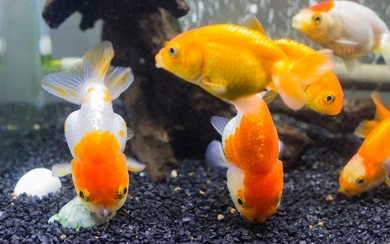
Food in the goldfish world is more than just survival—it’s also about glamour! The diet of your goldfish plays a critical role when it comes to how they radiate their captivating color.
Leverage foods rich in carotenoids – now that’s a mouthful! Apparently, foods like spirulina, shrimp, marigold petals, and bell peppers can help. A balanced diet with diverse nutrients can keep your goldfish glowing and healthy. So, give them nutritious food with variety and watch their golden glory shine!
Keeping Stress Levels Under Control
If you think stress is just a human issue, then think again. Stress can pale your precious pet faster than a chased mouse! It can be a silent color-drainer, brought on by various factors such as drastic temperature changes, bullying from other fish, or constant human interruption (yes, your tap on glass can be more like a hammer to their quiet life).
Devise ways to keep your goldfish’s stress levels in check. Moderate fish populations, provide a stable environment, and give them some peaceful, tranquil moments. These are not just good for their color, but for their overall well-being too! Trust us when we say, a relaxed goldfish is a colorful goldfish.
There we have it! Three pretty straightforward, not rocket science tips to help keep your goldfish healthy and vibrantly colorful. So, add ‘Goldfish Color Preserver’ to your resume because it is a thing; Google it! Just kidding. Bow to your happy goldfish kingdom with the satisfaction of a job well done.
And while you’re at it, let’s talk about recognizing when it’s time to consider veterinary intervention in the next section to take goldfish care to the next level. After all, sometimes we all need a little external helping fin, right?
When To Consult a Vet

Just like people, goldfish cannot talk about their discomfort or health concerns. Imagine if your goldie could swim up to you and say, “I’m feeling a tad bit under scales, mate.” Impossible, right? Well, it’s not a total dream because even without words, your goldfish sends out signals. That’s why determining the right time to consult a vet begins with understanding the ‘fishy language’ of warning signs. Most of the time a color change is normal, but occasionally, it indicates a larger problem bubbling under the surface.
Identifying Alarming Signs
The first thing to remember here, a good fish mommy or daddy always keeps a close eye on their babies (or adult fishes, as the case may be). Major changes in behavior, such as lack of energy, appetite changes, or erratic swimming can signal a problem. That sudden white splash on your goldfish isn’t always just a new fashion statement; it can sometimes imply underlying diseases like Ichthyophthirius (Ich) – essentially lice for fish. What? Does fish get lice?! – Yes, they do. Other concerning signs are red streaks, spots, or even pop-eye (Unless it’s Popeye the Sailor, you don’t want that).
A sudden drastic color change is certainly a good time to consult a vet. Any appearance of small white spots, sores, or film on their body warrants a professional opinion too. It’s like your fish saying, “Yo human, something’s up! Can’t you see?”. Your goldfish didn’t turn into a Silver Surfer just to get ignored.
Role Of A Vet in Goldfish’s Health Maintenance
Obviously, there’s no secret underwater hospital for fish (sadly real life isn’t as fun as Nemo makes us believe). But, aquatic veterinarians exist, that’s right, actual doctors who specialize in treating your piscine companions. They are the superheroes we need, not the ones we deserve. They have the expertise to diagnose diseases, provide proper medication, and advise on overall well-being. You can’t exactly stick a thermometer in your goldfish’s mouth (not without making a fishy face yourself anyway) so, we rely on these kind souls to keep our fish friends afloat.
Let me tell you, consulting a vet is not admitting defeat as a pet owner. It’s like having a mechanic for your car. You love your car, but you wouldn’t try to fix its engine unless you know what you’re doing (okay, some of you brave souls might, but you get my point). Vets also provide guidance on preventive care and tips to maintain a high-quality environment, which helps keep your goldfish from ever feeling ‘blue’.
Alright, we’ve just navigated through the somewhat deep waters of when to involve a vet in your fishy affairs. Remember, attentive observation and prompt action are vital. In the ocean of pet ownership, you’re riding the waves successfully if you can say, “I know my goldfish inside-out, and yes, that includes their color fluctuations!”. As we paddle forward, let’s summarize what we’ve discovered so far and reiterate the joy and responsibilities that come along with owning these charming little sprites. Dive right in to the next section, it’s going to be fintastic!
Final Thought
Well, folks, we swam across a rather deep sea, didn’t we? From understanding goldfish colour genetics (who knew fish had such complex DNA, right?!), to wrapping our minds around the various reasons causing your adorable golden buddy to turn Snow-White-Without-The-Seven-Dwarfs. To top it off, we peeked into proper fish-care 101, and how to decide when your little Aquaman needs professional help.
Recapping Reasons and Solutions for Your Goldfish Turning White
Let’s quickly wriggle through everything discussed so far. The natural color change in goldfish, to remind you, is as normal as us changing hairstyles – no cause to push the panic button. But, while you’re scrolling through your latest Netflix binge, keep an eye on your fish tank’s environment. Any extreme changes could send your goldfish on a full-blown colour transformation mode.
And hey, we’re fish parents, but we’re not fish. So our ‘Junk Food Fridays’ don’t apply to our aquatic friends. Give them a balanced diet – good for their health and that golden sheen! Be the chill parents of the aquatic world, keep the stress low and see the difference it makes to the scales of your tiny goldfish.
Now, remember, when you see any disconcerting changes, consult a vet. Trust me, finding Nemo’s doctor isn’t that tough.
Reminding The Joy and Responsibilities of Goldfish Ownership
Being a goldfish owner is like being the captain of an adorable, mini, underwater ship. And like all captains, you have some serious responsibilities. Just because they can’t bark or meow for attention, doesn’t mean they don’t need it. Taking care of your fish means making sure their environment is top-notch and strictly monitoring their diet.
But you know what? Watching that little golden nugget zip around the tank, all spry and full of life, bestows a form of joy that’s as radiant as their shimmering scales. It reminds us of the magic that exists in itty-bitty things and how precious life is, no matter how small.
So next time your goldfish swims by, remember not just its golden glamour but also the little heart that beats within it… And that you, dear reader, are the caretaker of that tiny heart. Now, isn’t that simply beautiful?
Frequently Asked Questions (FAQ)
Question 1: Why did my goldfish turn white?
Answer: Goldfish may turn white due to several reasons such as natural color evolution as they mature, environmental factors like lighting and water quality, dietary adjustments, or due to stress and certain health conditions.
Question 2: Is it normal for a goldfish to change color?
Answer: Yes, it’s normal for goldfish to change color as they age. However, significant or sudden changes could indicate stress, poor nutrition, or illness.
Question 3: Can the white color be reverted back to the original gold?
Answer: This largely depends on the cause of color change. If it’s due to environmental factors or stress, rectifying these conditions can potentially restore the original coloring. However, if it’s part of their natural aging process, the color is unlikely to revert.
Question 4: How can I maintain my goldfish’s vibrant color?
Answer: To maintain your goldfish’s vibrant color, ensure proper tank conditions, provide a balanced diet filled with nutrients, and keep stress levels under control.
Question 5: When should I consult a vet for my goldfish?
Answer: If your goldfish is showing signs of ill health, like lethargy, loss of appetite, erratic swimming, or extreme color change, it’s advisable to consult a vet.
Question 6: Can a goldfish’s diet influence its color?
Answer: Yes, a goldfish’s diet plays a fundamental role in its coloration. A diet rich in carotene or spirulina can help improve and maintain their vibrant color.
Question 7: Does the tank’s lighting affect a goldfish’s color?
Answer: Yes, both the lack and excess of light can impact the goldfish’s color. Goldfish need a balance of light and dark, much like humans, to keep them healthy and sustain their color.
Question 8: What are some signs of stress in my goldfish?
Answer: Signs of stress in goldfish can include erratic swimming, gasping at the surface, loss of appetite, color changes, and disease outbreaks. Management of stress relies on identifying and correcting the underlying cause.



